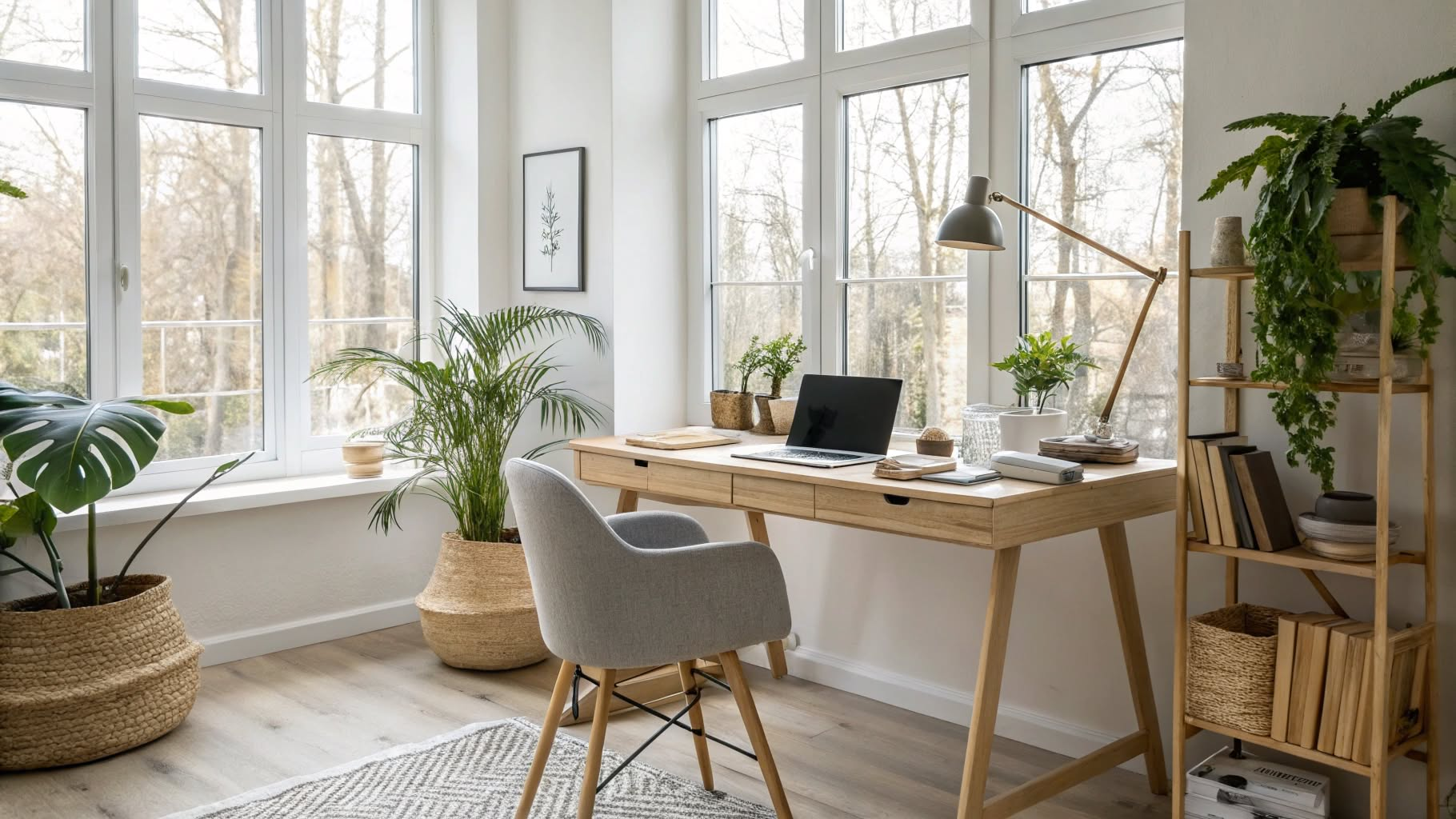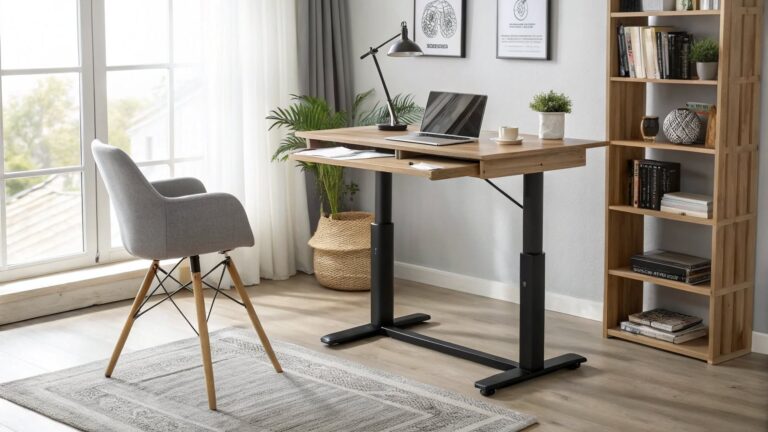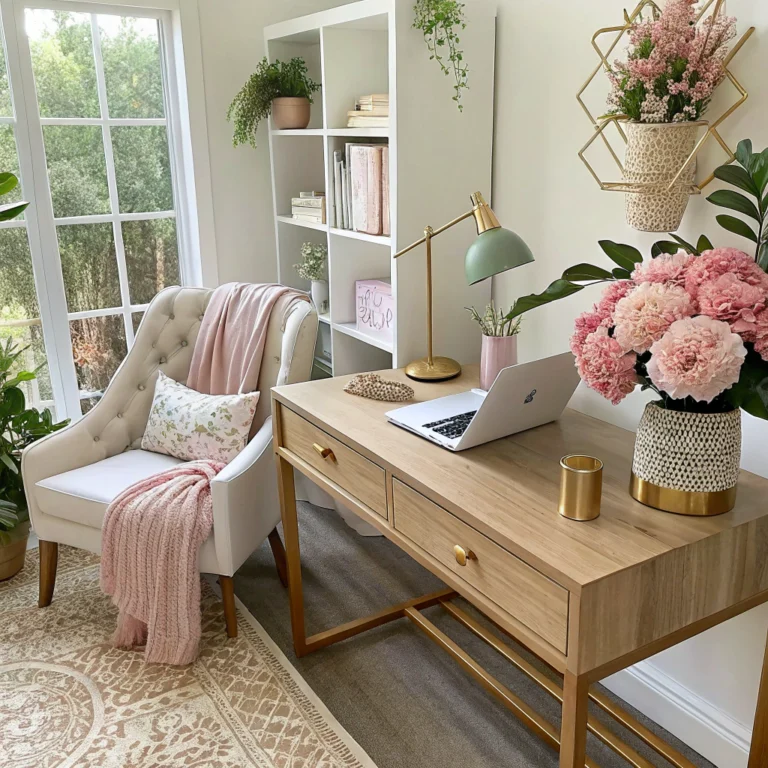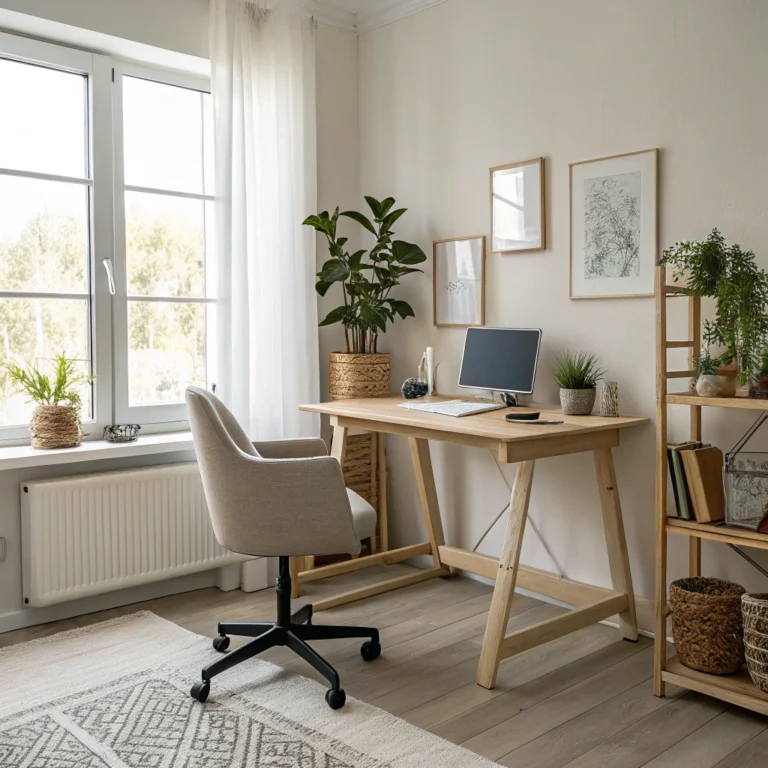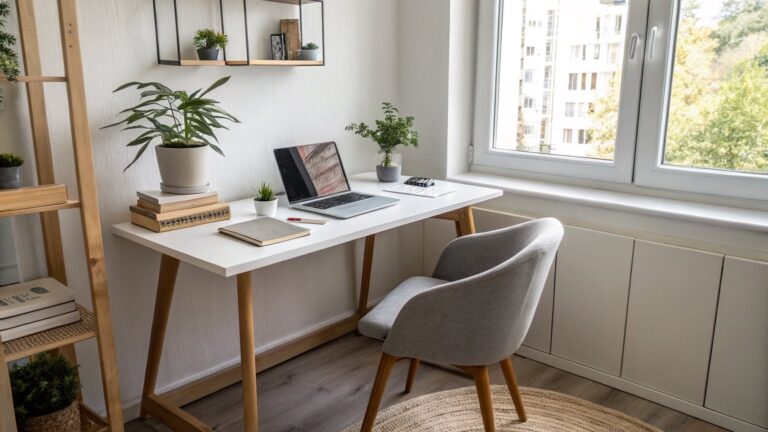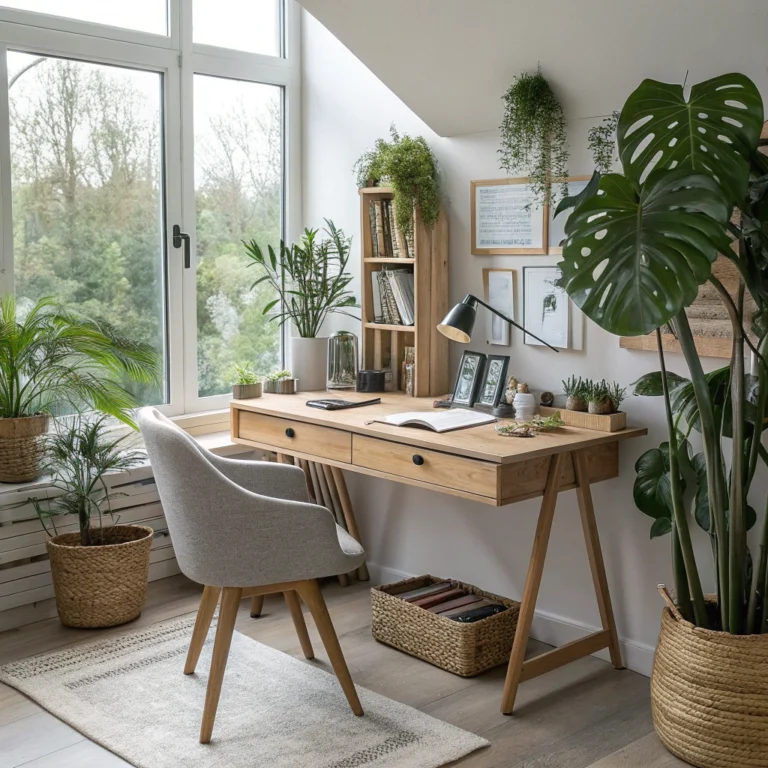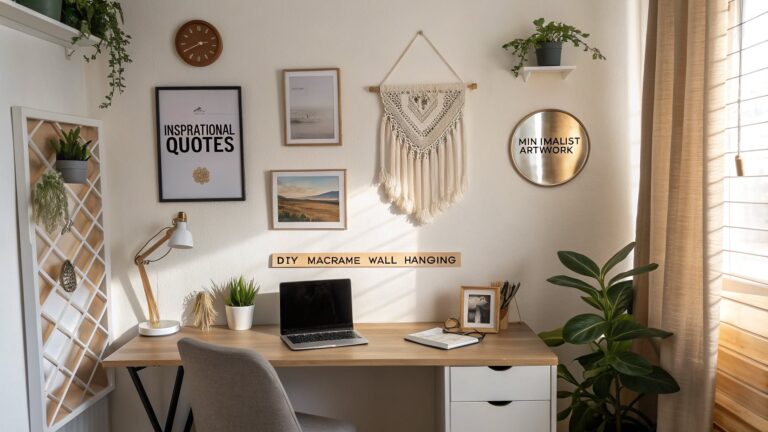Home Office Aesthetic Perfect Workspace Inspiration
Creating a home office that balances beauty and functionality has become more essential than ever as remote work continues to reshape our professional lives. The aesthetic of your workspace isn’t just about visual appeal—it’s about crafting an environment that nurtures productivity, sparks creativity, and supports your wellbeing during long working hours.
Whether you’re designing a dedicated room, carving out a corner in your living space, or transforming an underutilized nook, your home office should reflect your personal style while meeting your professional needs. In this guide, we’ll explore how to create a workspace that inspires your best work, from foundational design principles to personalized touches that make the space uniquely yours.
You’ll discover how thoughtful color psychology, strategic furniture arrangement, and intentional decorative elements can transform even the most ordinary space into a productive sanctuary. Let’s reimagine what a home office can be—not just a place where work happens, but a space that actively contributes to your success and satisfaction.
Finding Your Home Office Design Style
Your home office should feel like a natural extension of both your home’s existing aesthetic and your professional identity. Begin by identifying design styles that resonate with you—whether you’re drawn to the clean lines of Scandinavian minimalism, the warmth of mid-century modern, the classic appeal of traditional design, or the personalized approach of eclectic spaces. Each style creates a different atmosphere and can subtly influence your work experience. Minimalist designs often reduce visual distractions and create a sense of order that helps some people focus, while more decorative styles might stimulate creativity for others. Consider how different aesthetics affect your mood and productivity before committing to a specific direction.
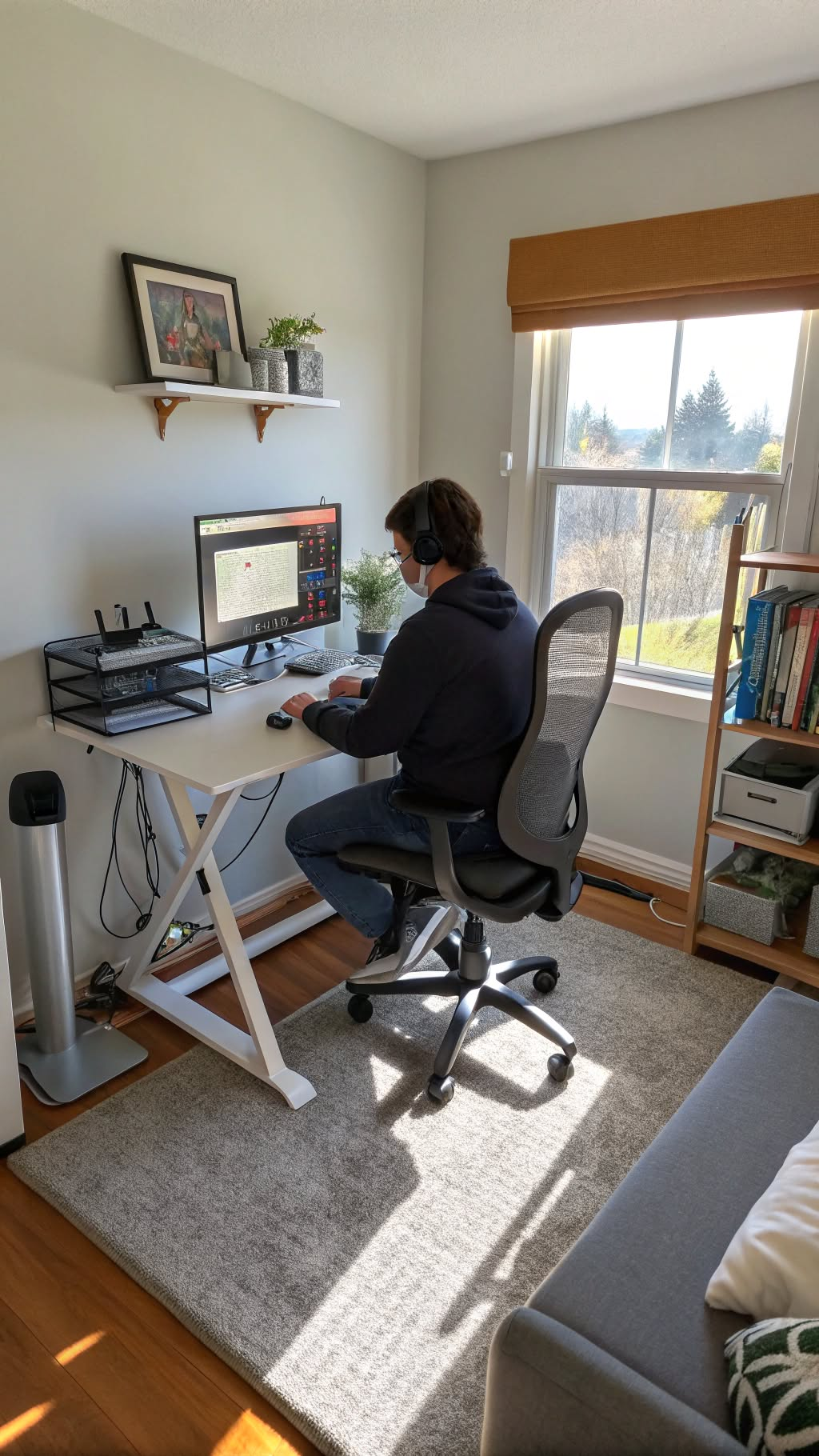
Once you’ve identified your preferred style, think about how it can be adapted to support your specific work needs. For instance, if you’re drawn to industrial design but need a softer environment for long video calls, you might incorporate industrial elements like metal fixtures or exposed materials while balancing them with acoustic solutions and comfortable seating. Similarly, if you love bohemian aesthetics but need a highly organized workspace, consider how to incorporate free-spirited elements through color and texture while maintaining functional storage systems. The most successful home offices don’t rigidly adhere to design templates—they thoughtfully blend style preferences with practical considerations.
Color plays a particularly crucial role in establishing your office aesthetic while influencing your psychological state during work hours. Blues and greens typically promote calm focus and are excellent choices for high-stress professions. Warmer tones like muted oranges or terracottas can stimulate creativity and conversation—ideal for collaborative spaces. Neutrals provide versatility and can be accented with personality through accessories. When selecting your color palette, consider not just what looks appealing, but how those colors might affect your energy levels, concentration, and mood throughout the workday. Remember that you can introduce color through wall paint, furniture pieces, textiles, or decorative accents—allowing you to commit to different degrees depending on your comfort level and housing situation.
Ergonomics and Layout: The Foundation of Workspace Harmony
The most visually stunning home office will quickly lose its appeal if it causes physical discomfort or impedes your workflow. Ergonomics should form the foundation of your workspace design, starting with proper seating. Invest in a chair that supports your spine’s natural curve, with adjustable features that allow you to customize the height, armrests, and tilt to your body’s specific needs. Position your chair so that your feet rest flat on the floor (or on a footrest) with knees at approximately a 90-degree angle. This fundamental setup prevents the strain that can accumulate during long workdays and ultimately undermine both your health and productivity.
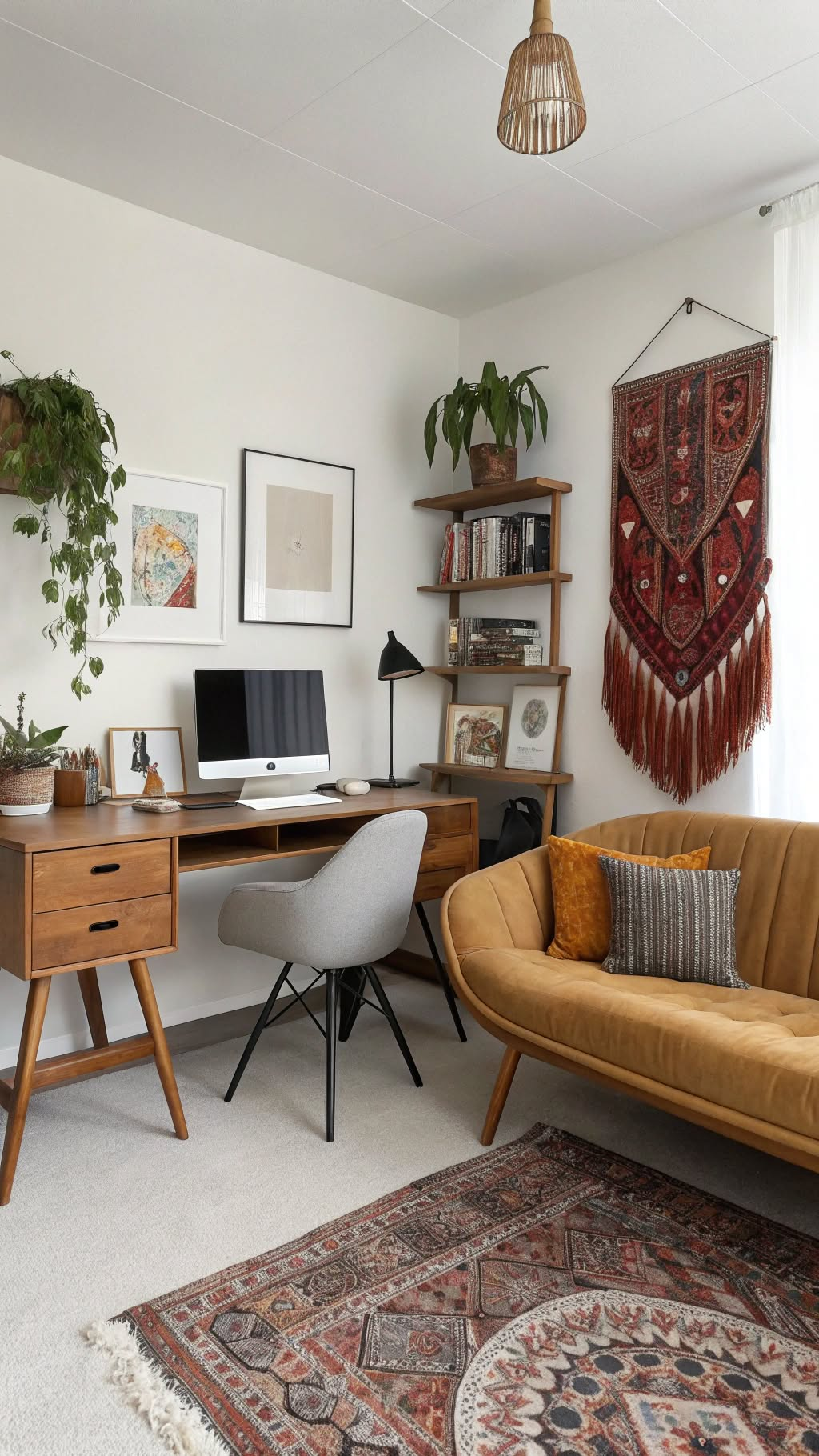
Your desk arrangement deserves equally careful consideration. Position your computer monitor at eye level, approximately an arm’s length away, to prevent neck strain. If you use a laptop, consider a separate keyboard and mouse with a laptop stand to achieve proper ergonomics. The height of your desk should allow your elbows to rest comfortably at your sides with forearms parallel to the floor while typing. Beyond these basics, think about your specific work patterns—do you need space for physical documents, multiple screens, or creative activities? Design your surface area to accommodate these needs while maintaining ergonomic principles.
The overall layout of your home office should optimize both natural light and movement. Position your desk perpendicular to windows when possible to reduce glare while still benefiting from natural illumination. Consider the flow of movement within the space—ensure pathways remain clear and frequently used items are within easy reach. If your work involves different activities, consider creating zones within your office: perhaps a main desk area for computer work, a comfortable reading nook for review tasks, and a standing area for phone calls or quick tasks. This variety not only supports physical wellbeing by encouraging position changes but also helps mentally separate different types of work, potentially improving focus and creativity as you move between carefully designed zones.
Storage Solutions and Organization That Inspire
Clutter is the silent saboteur of both aesthetic appeal and mental clarity in a home office. Developing storage solutions that are both functional and visually pleasing is essential for maintaining an inspiring workspace. Begin by assessing exactly what needs to be stored in your office—from technology and supplies to reference materials and personal items. This inventory will guide your storage decisions, helping you invest in solutions that truly serve your needs rather than generic organizing products that might not address your specific challenges. Remember that the most effective organization systems are those you’ll actually maintain, so choose solutions that work with your natural habits rather than fighting against them.
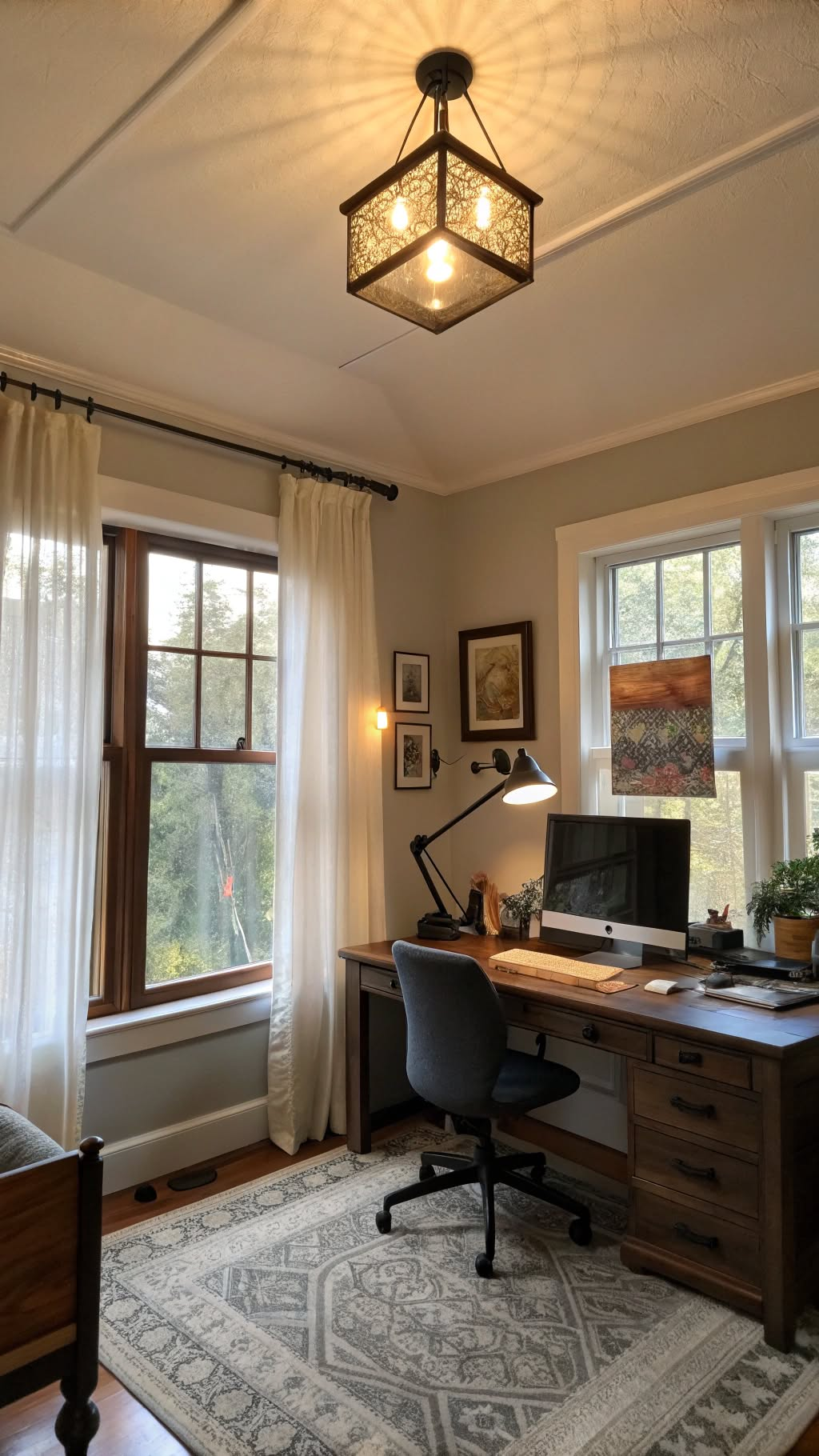
Vertical space often represents untapped potential in home offices, especially in smaller areas. Wall-mounted shelving, bookcases that extend toward the ceiling, and modular wall systems can dramatically increase your storage capacity without consuming precious floor space. These vertical elements can serve double duty as design features—open shelving allows you to display decorative items alongside functional necessities, while creating visual interest through varying heights and arrangements. Consider the visual weight of your storage pieces; floating shelves can maintain an airy feel in compact spaces, while substantial bookcases might ground a larger office while providing abundant storage.
The most visually harmonious offices often incorporate hidden storage alongside display areas. Cable management solutions keep technology connections tidy and out of sight, while decorative boxes, baskets, and drawers conceal items that function well but don’t contribute aesthetically. For items you use frequently, consider transparent or open storage that maintains easy access while enforcing organization—glass jars for small supplies, desktop sorters for current papers, or pegboards for tools and inspiration pieces. The balance between concealed and visible storage creates a workspace that feels both organized and lived-in, professional yet personal. This thoughtful approach to organization doesn’t just serve practical needs—it creates visual breathing room that allows design elements to shine and gives your mind space to focus on the work at hand.
Lighting and Atmosphere: Setting the Mood for Productivity
Lighting forms the foundation of any effective workspace, influencing everything from your ability to see clearly to your circadian rhythms and mental state. Natural light should be your primary source whenever possible—position your desk to maximize exposure while avoiding direct glare on screens. Beyond its practical benefits, natural light creates a connection to the outside world that can reduce the isolation sometimes associated with home offices. If your space has limited windows, consider light-enhancing strategies like mirrors positioned to reflect existing natural light, glass or translucent room dividers that allow light to penetrate deeper into the space, or even light tubes that can channel sunlight from the roof into interior rooms.
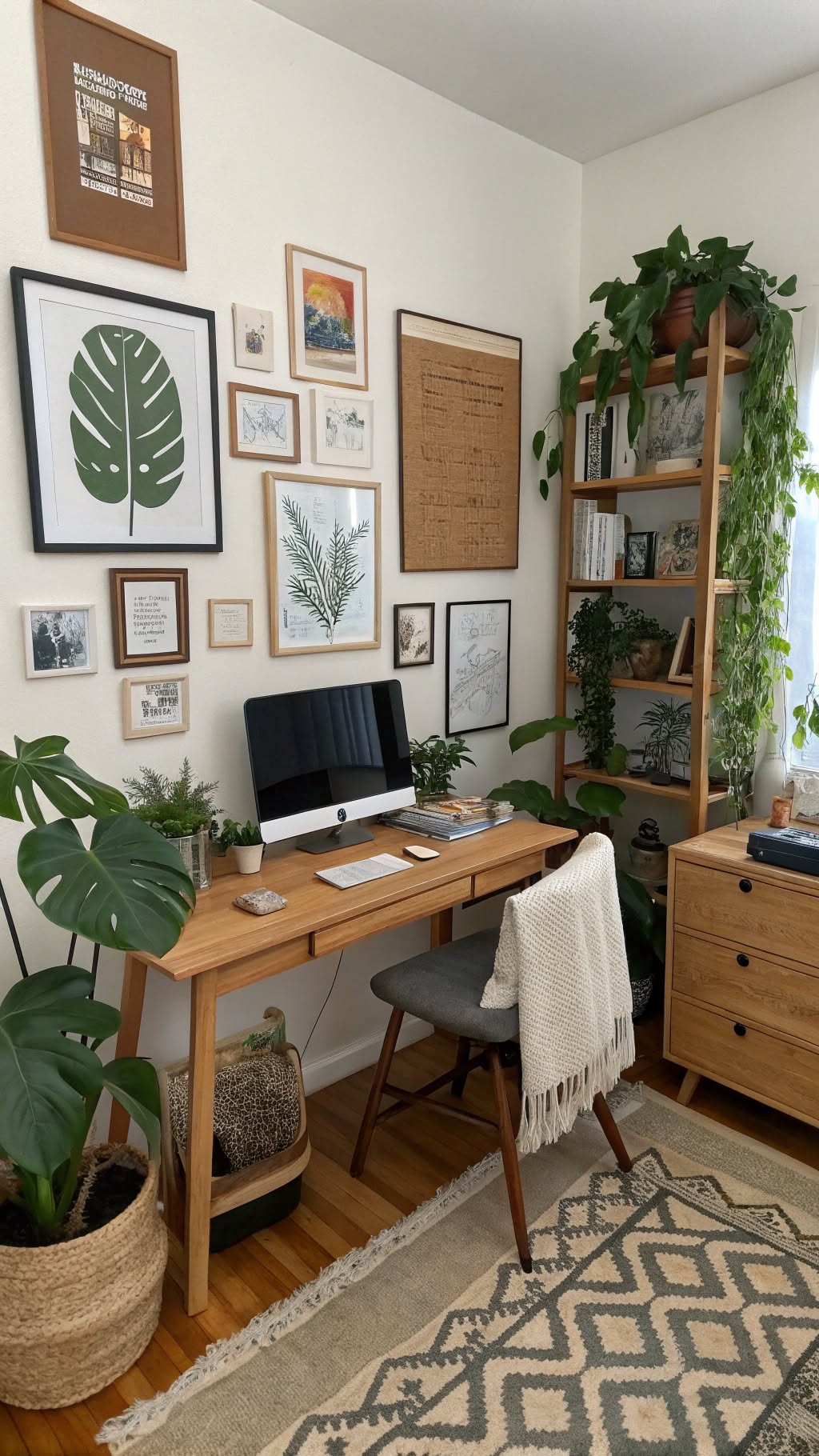
A well-designed lighting scheme incorporates multiple sources to create layers of illumination for different needs. Ambient lighting provides overall illumination and might come from ceiling fixtures, recessed lights, or floor lamps. Task lighting focuses on specific work areas—adjustable desk lamps are essential for reducing eye strain during detail-oriented tasks. Accent lighting highlights architectural features or decorative elements, adding dimension to the space. Smart lighting systems allow you to adjust brightness and color temperature throughout the day, mimicking natural light patterns to support your energy levels—brighter, cooler light for focus-intensive morning work, transitioning to warmer tones that signal winding down in late afternoon.
Beyond visual illumination, consider how other sensory elements contribute to your workspace atmosphere. Sound management might involve noise-cancelling elements like rugs, textiles, or acoustic panels if your space is echo-prone or subject to household noise. Alternatively, you might incorporate gentle background sounds—whether that’s a small desktop fountain, carefully chosen music, or nature sounds that mask distractions while creating a consistent audio environment. Scent can similarly influence your work experience—essential oil diffusers, fresh flowers, or quality candles used during breaks can create sensory cues that help differentiate your workspace and potentially trigger focus or creativity. Temperature control, air quality, and ventilation round out the atmospheric considerations that, while sometimes overlooked, significantly impact comfort and concentration during long work sessions.
Personalizing Your Space: The Details That Make a Difference
A truly inspiring home office transcends pure functionality through personal touches that energize and motivate. The objects you choose to surround yourself with can serve as daily affirmations of your values, achievements, and aspirations. Consider incorporating meaningful mementos—perhaps a souvenir from significant travel, awards or certifications that remind you of your capabilities, or family photos that ground you in what matters most. Artwork deserves special consideration in a workspace; select pieces that either calm or energize you depending on your needs. Some professionals benefit from serene landscapes that provide mental breathing room, while others draw inspiration from bold, dynamic works that stimulate creative thinking. The key is intentionality—choose items that actively contribute to your desired mindset rather than filling space with generic decor.
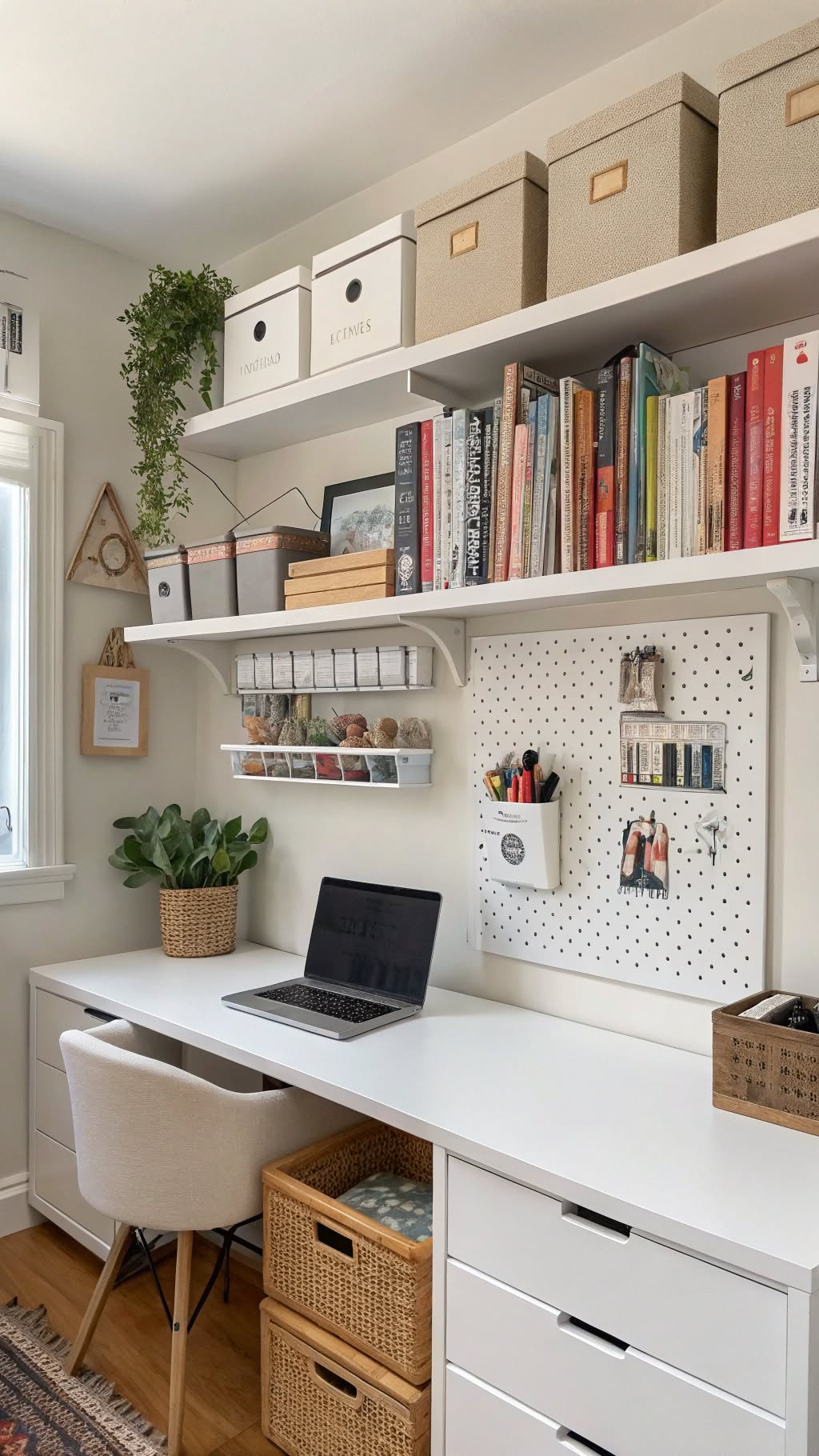
Living elements bring vitality to a home office in ways that manufactured items cannot. Houseplants not only improve air quality but also provide a connection to nature that can reduce stress and increase attention span. If you’re new to plant care, start with resilient varieties like snake plants, pothos, or ZZ plants that thrive with minimal attention. Even fresh flowers or a small herb garden on a sunny windowsill can introduce life and sensory pleasure to your daily work experience. Natural materials similarly bring organic warmth to a workspace—consider wood furnishings with visible grain, stone accessories, or textiles in natural fibers that add textural interest while creating a subtle connection to the natural world.
The most successful home offices balance professional functionality with personal expression to create spaces that feel authentically aligned with their occupants. Consider how your workspace reflects your professional identity—whether that means displaying books related to your industry, creating a backdrop that communicates competence during video calls, or incorporating elements of your brand colors if you’re an entrepreneur. At the same time, allow your broader identity to inform the space through subtle nods to hobbies, cultural heritage, or aesthetic preferences. This integration creates a workspace that feels holistically supportive rather than compartmentalizing your professional self from your personal identity. The most inspiring offices acknowledge that productivity flourishes not in sterile, impersonal environments, but in spaces that recognize and nurture the whole person engaged in the work.
Conclusion
Creating a home office that truly inspires isn’t about following trends or achieving a picture-perfect space that could be featured in a design magazine. It’s about thoughtfully crafting an environment that supports your specific work needs while reflecting your personal aesthetic sensibilities. The most successful home workspaces evolve organically as you discover what genuinely enhances your productivity and wellbeing. Start with the fundamentals—ergonomics that protect your physical health, lighting that supports your visual comfort and energy levels, and organization systems that maintain order without requiring constant effort. Build upon this foundation with design elements that speak to you personally, whether that’s through color choices that affect your mood, natural elements that bring life to your space, or meaningful objects that motivate and inspire.
Today, take one small step toward enhancing your workspace aesthetic. Perhaps reorganize a cluttered area, introduce a plant, adjust your lighting, or simply clear your desk completely to start fresh tomorrow. Even minor improvements can shift your relationship with your workspace and potentially transform your daily work experience. Your home office isn’t just a backdrop for your professional life—it’s an active participant in your success and satisfaction. By creating a space that truly inspires you, you’re making a significant investment in both your current wellbeing and your future achievements.
